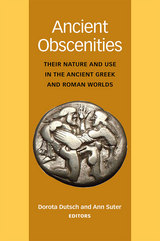
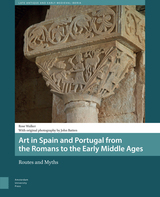
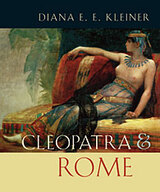
With the full panorama of her life forever lost, Cleopatra touches us in a series of sensational images: floating through a perfumed mist down the Nile; dressed as Venus for a tryst at Tarsus; unfurled from a roll of linens before Caesar; couchant, the deadly asp clasped to her breast. Through such images, each immortalizing the Egyptian queen's encounters with legendary Romans--Julius Caesar, Mark Antony, and Octavian Augustus--we might also chart her rendezvous with the destiny of Rome. So Diana Kleiner shows us in this provocative book, which opens an entirely new perspective on one of the most intriguing women who ever lived. Cleopatra and Rome reveals how these iconic episodes, absorbed into a larger historical and political narrative, document a momentous cultural shift from the Hellenistic world to the Roman Empire. In this story, Cleopatra's death was not an end but a beginning--a starting point for a wide variety of appropriations by Augustus and his contemporaries that established a paradigm for cultural conversion.
In this beautifully illustrated book, we experience the synthesis of Cleopatra's and Rome's defining moments through surviving works of art and other remnants of what was once an opulent material culture: religious and official architecture, cult statuary, honorary portraiture, villa paintings, tombstones, and coinage, but also the theatrical display of clothing, perfume, and hair styled to perfection for such ephemeral occasions as triumphal processions or barge cruises. It is this visual culture that best chronicles Cleopatra's legend and suggests her subtle but indelible mark on the art of imperial Rome at the critical moment of its inception.
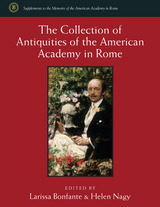
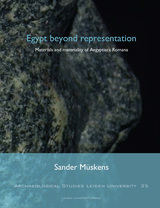
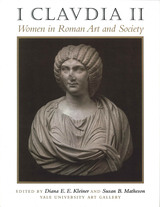
I, Claudia: Women in Ancient Rome—an exhibition and catalog produced by the Yale University Art Gallery—provided the first comprehensive study of the lives of Roman women as revealed in Roman art. Responding to the popular success of the exhibit and catalog, Diana E. E. Kleiner and Susan B. Matheson here gather ten additional essays by specialists in art history, history, and papyrology to offer further reflections on women in Roman society based on the material evidence provided by art, archaeology, and ancient literary sources.
In addition to the editors, the contributors are Cornelius C. Vermeule, Rolf Winkes, Mary T. Boatwright, Susan Wood, Eve D'Ambra, Andrew Oliver, Diana Delia, and Ann Ellis Hanson. Their essays, illustrated with black-and-white photos of the art under discussion, treat such themes as mothers and sons, marriage and widowhood, aging, adornment, imperial portraiture, and patronage.
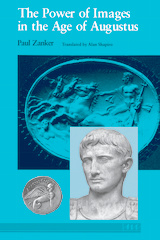

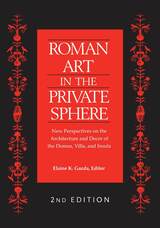
---Classical Review
---Classical World

The essays treat works of art that belonged to every major Roman housing type: the single-family atrium houses and the insula apartment blocks in Italian cities, the dramatically sited villas of the Campanian coast and countryside, and the palatial mansions of late antique provincial aristocrats.
In a complementary fashion the essays consider domestic art in relation to questions of decorum, status, wealth, social privilege, and obligation. Patrons emerge as actively interested in the character of their surroundings; artists appear as responsive to the desire of their patrons. The evidence in private art of homosexual conduct in high society is also set forth.
Originality of subject matter, sophisticated appreciation of stylistic and compositional nuance, and philosophical perceptions of the relationship of humanity and nature are among the themes that the essays explore. Together they demonstrate that Roman domestic art must be viewed on its own terms.
Elaine K. Gazda is Professor of the History of Art and Curator of Hellenistic and Roman Antiquities at the Kelsey Museum of Archaeology, University of Michigan.
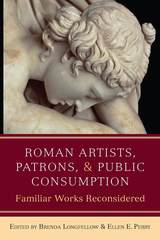
The work gathered in Roman Artists, Patrons, and Public Consumption displays the breadth and depth of scholarship in the field made possible by these fundamental changes. The first five essays approach individual objects and artistic tropes, as well as their cultural contexts and functions, from fresh and dynamic angles. The latter essays focus on case studies in Pompeii, demonstrating how close visual analysis firmly rooted in local and temporal contexts not only strengthens understanding of ancient interactions with monuments but also sparks a reconsideration of long-held assumptions reinforced by earlier scholarship.
These rigorous essays reflect and honor the groundbreaking scholarship of Elaine K. Gazda. In addition to volume editors Brenda Longfellow and Ellen E. Perry, contributors include Bettina Bergmann, Elise Friedland, Barbara Kellum, Diana Y. Ng, Jessica Powers, Melanie Grunow Sobocinski, Lea M. Stirling, Molly Swetnam-Burland, Elizabeth Wolfram Thill, and Jennifer Trimble.
READERS
Browse our collection.
PUBLISHERS
See BiblioVault's publisher services.
STUDENT SERVICES
Files for college accessibility offices.
UChicago Accessibility Resources
home | accessibility | search | about | contact us
BiblioVault ® 2001 - 2024
The University of Chicago Press









